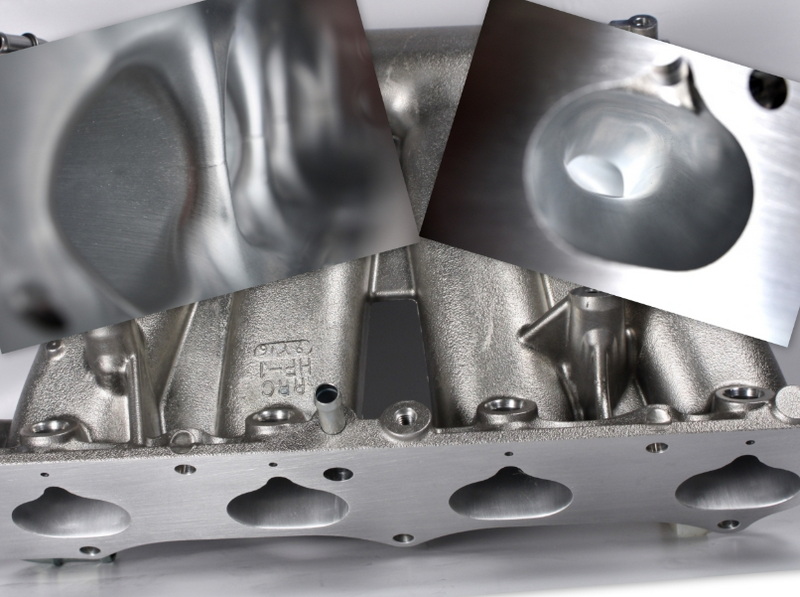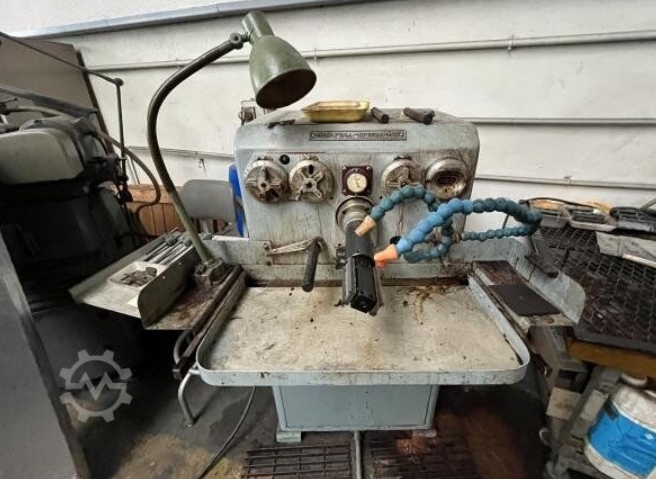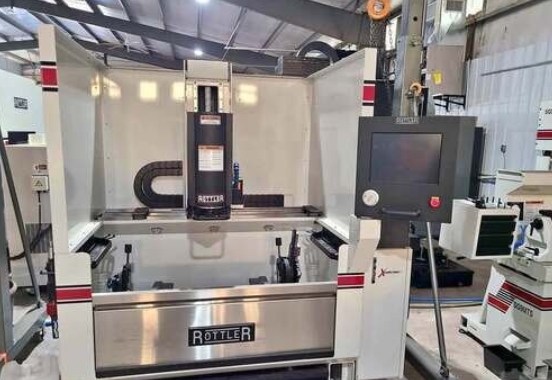Content Menu
● Understanding Used Extrusion Machinery Quality
>> What Constitutes Quality in Used Extrusion Machinery?
● Key Steps to Ensure Quality When Buying Used Extrusion Machinery
>> 1. Define Your Production Needs Clearly
>> 2. Conduct a Thorough Visual and Physical Inspection
>> 3. Review Maintenance Records and History
>> 4. Verify Availability of Spare Parts and Technical Support
>> 5. Assess Energy Efficiency and Automation Features
>> 6. Confirm Compliance with Industry Standards and Safety Regulations
● Quality Control Practices for Used Extrusion Machinery Operation
>> Regular Maintenance and Cleaning
>> Process Parameter Monitoring and Adjustment
>> Operator Training and Safety
● Common Defects and Troubleshooting in Extrusion Processes
● Advantages of Buying Used Extrusion Machinery
● Conclusion
● FAQ
>> 1. How can I assess the condition of a used extrusion machine before purchase?
>> 2. What are the critical components to check for wear in used extrusion machinery?
>> 3. Why is energy efficiency important in used extrusion machinery?
>> 4. How does automation improve the quality of extrusion processes?
>> 5. What maintenance practices extend the life of used extrusion machinery?
● Citations:
Used extrusion machinery offers a cost-effective alternative to new equipment, enabling manufacturers to maintain or expand production capabilities without the high upfront investment. However, ensuring the quality of used extrusion machinery is critical to avoid costly downtime, subpar product quality, and unexpected repair expenses. This comprehensive guide explores the key factors and best practices to ensure you acquire reliable, high-quality used extrusion machinery that meets your production needs.

Understanding Used Extrusion Machinery Quality
What Constitutes Quality in Used Extrusion Machinery?
Quality in used extrusion machinery is multifaceted and includes:
- Mechanical Condition: The wear and tear on critical components such as screws, barrels, motors, and gearboxes.
- Operational Performance: The machine's ability to maintain consistent output, dimensional accuracy, and surface finish.
- Maintenance History: Records of repairs, part replacements, and routine servicing.
- Compatibility: Suitability for your specific materials and production requirements.
- Energy Efficiency: The machine's power consumption relative to output.
- Safety Features: Compliance with current safety standards to protect operators.
Ensuring these aspects are satisfactory helps guarantee the machine will perform reliably and produce quality products[1][2][8].
Key Steps to Ensure Quality When Buying Used Extrusion Machinery
1. Define Your Production Needs Clearly
Before searching for used extrusion machinery, identify:
- The types of materials you will process (e.g., polyethylene, PVC, ABS).
- The required production capacity and speed.
- Product specifications such as dimensional tolerances and surface finish.
- Space and power availability in your facility.
Understanding these parameters ensures you select a machine that matches your operational goals and avoids costly mismatches[1][4][7].
2. Conduct a Thorough Visual and Physical Inspection
A detailed inspection is essential to assess the machine's condition:
- Visual Inspection: Look for rust, cracks, dents, fluid leaks, and corrosion on mechanical and electrical components.
- Component Check: Examine hoses, wires, cables, and connections for damage or disconnection.
- Wear Assessment: Measure screw outer diameter (OD) and barrel inner diameter (ID) to detect wear.
- Safety Features: Verify the presence and function of emergency stops, guards, and compliance with OSHA or local safety regulations.
- Operational Test: If possible, run the machine to observe noise, vibrations, and output quality[1][2][6].
Hiring a professional inspector or technician with extrusion expertise can provide a more accurate evaluation.
3. Review Maintenance Records and History
Request detailed maintenance logs including:
- Dates and types of repairs or part replacements.
- Lubrication schedules.
- Filter and heater element replacements.
- Any upgrades or retrofits performed.
A well-maintained machine with documented servicing is likely to have a longer useful life and fewer unexpected failures[1][3][6].
4. Verify Availability of Spare Parts and Technical Support
Used extrusion machinery should have accessible spare parts to minimize downtime during repairs. Confirm:
- Availability of OEM or compatible parts.
- Supplier or manufacturer support for technical assistance.
- Possibility of software or control system updates if the machine has automation.
Choosing machines from reputable brands with active support networks reduces operational risks[1].
5. Assess Energy Efficiency and Automation Features
Energy consumption impacts operating costs significantly. Prefer machines with:
- Energy-efficient motors and drives.
- Advanced control systems that optimize temperature, pressure, and speed.
- Automation technologies such as sensors and robotic inspection to maintain consistent quality and reduce human error.
Modern or upgraded used extrusion machinery often incorporates these features, enhancing productivity and sustainability[1][5][8].
6. Confirm Compliance with Industry Standards and Safety Regulations
Ensure the machine meets relevant certifications such as ISO 9001:2015 for quality management and complies with workplace safety standards. This confirms the equipment adheres to durability, safety, and performance benchmarks[1][8].

Quality Control Practices for Used Extrusion Machinery Operation
Once you acquire used extrusion machinery, maintaining quality involves:
Regular Maintenance and Cleaning
- Clean electrical components, including frequency converters and PLCs, to prevent dust accumulation.
- Replace filter elements and lubricate moving parts regularly to reduce wear.
- Check heater bands and bolts for tightness annually.
- Monitor gearcase oil condition and change it periodically (e.g., every 4,000 hours).
- Inspect motor surfaces and air intakes to prevent overheating[3][6].
Process Parameter Monitoring and Adjustment
- Maintain precise control over temperature (±1°C), pressure, and extrusion speed to ensure consistent product quality.
- Use sensors and control systems for real-time monitoring and automatic adjustments.
- Regularly measure product dimensions with laser micrometers or similar devices to detect deviations early[1][5][8].
Operator Training and Safety
- Train operators on machine use, safety protocols, and routine checks.
- Ensure safety features are functional to prevent accidents.
- Plan maintenance and repairs to minimize production disruptions[1][2][3].
Common Defects and Troubleshooting in Extrusion Processes
Used extrusion machinery may exhibit defects due to wear or improper settings. Common issues include:
- Rough or uneven surface finish.
- Thickness variations and uneven wall thickness.
- Extruder surging or inconsistent output.
To address these:
- Adjust die settings for proper alignment and uniform heating.
- Screen raw materials to remove impurities.
- Optimize temperature and pressure controls to avoid overheating or over-pressurization[1].
Advantages of Buying Used Extrusion Machinery
- Cost Savings: Typically one-third the price of new machines, with additional budget for repairs and upgrades.
- Faster Availability: Used machines can be deployed quicker than waiting for new equipment manufacturing.
- Access to High-Quality Brands: Opportunity to acquire reputable brands at reduced costs.
- Potential for Upgrades: Machines can be retrofitted with modern control systems and automation[1][4].
Conclusion
Ensuring the quality of used extrusion machinery requires a systematic approach encompassing thorough inspection, understanding of production needs, verification of maintenance history, and confirmation of spare parts availability. Incorporating energy-efficient and automated features enhances productivity and reduces costs. Regular maintenance and operator training are vital to sustain machine performance and product quality. By following these guidelines and working with reputable sellers, manufacturers can confidently invest in used extrusion machinery that delivers reliable, high-quality output and long-term value.

FAQ
1. How can I assess the condition of a used extrusion machine before purchase?
Conduct a detailed visual and physical inspection focusing on wear, leaks, electrical components, and safety features. Request maintenance records and, if possible, test the machine in operation. Hiring an expert inspector is recommended[1][2][6].
2. What are the critical components to check for wear in used extrusion machinery?
Key parts include the screw outer diameter, barrel inner diameter, heater bands, gearboxes, and electrical components like motors and controllers. Measuring wear on screws and barrels is essential to ensure processing efficiency[1][3][6].
3. Why is energy efficiency important in used extrusion machinery?
Energy-efficient machines reduce operating costs and environmental impact. Features like optimized motor drives and advanced control systems help maintain consistent quality while minimizing power consumption[1][5][8].
4. How does automation improve the quality of extrusion processes?
Automation integrates sensors and control systems that monitor and adjust temperature, pressure, and speed in real-time, reducing human error and ensuring consistent product quality. Robotic inspection detects defects faster and more accurately than manual methods[1][5][8].
5. What maintenance practices extend the life of used extrusion machinery?
Regular cleaning of electrical components, timely oil and filter changes, lubrication of moving parts, tightening heater bands, and scheduled inspections prevent wear and breakdowns. Operator training and adherence to maintenance schedules are also crucial[3][6].
Citations:
[1] https://www.yjing-extrusion.com/how-do-you-evaluate-the-quality-of-used-extrusion-machinery.html
[2] https://plastiwin.com/uncategorized/plastics-machinery-inspection-purchase-checklist/
[3] https://jhsmachine.com/en/nd.jsp?id=11
[4] https://reads.alibaba.com/your-ultimate-guide-to-sourcing-plastic-extruders/
[5] https://www.la-plastic.com/post/what-is-the-quality-control-of-extrusion-process
[6] https://davis-standard.com/custom_blog/10-tips-to-keep-your-extruder-pumping/
[7] https://www.accextrusion.com/news/the-ultimate-buyers-guide-to-plastic-profile-extrusion-machines-what-you-need-to-know/
[8] https://www.yjing-extrusion.com/how-do-plastic-extrusion-equipment-manufacturers-ensure-quality.html
[9] https://plasticextrusiontech.net/quality-control-and-testing-procedures-in-plastic-extrusions/
[10] https://www.rocalextrusions.co.uk/news/quality-control-in-plastic-extrusion-to-ensure-consistent-results/
[11] https://www.kellerplastics.com/quality-assurance-in-plastic-extrusion-certifications-and-standards/
[12] https://www.inplexllc.com/blog/quality-assurance-for-extrusion-products/
[13] https://www.akei.com.cn/en/nf39.html
[14] https://www.machinepoint.com/machinepoint/inventory.nsf/web2utreetype?openform&catarbol=fprinting&mt=mtfilm0240&ln=en
[15] https://jydjx.com/effective-maintenance-strategies-for-plastic-extrusion-machines/
[16] https://ieomsociety.org/proceedings/2023houston/297.pdf
[17] https://www.chinaplastictech.com/how-to-use-inspect-and-maintain-the-extrusion-blow-molding-machine%EF%BC%9F.html/
[18] https://www.medicalextruders.com/info/extrusion-equipment-maintenance-method-24455647.html
[19] https://www.perryvidex.com/used-plastic-extrusion-lines-guide-article/
[20] https://abhiplastics.com/the-ultimate-guide-to-boosting-productivity-with-plastic-extrusion-machines/






















